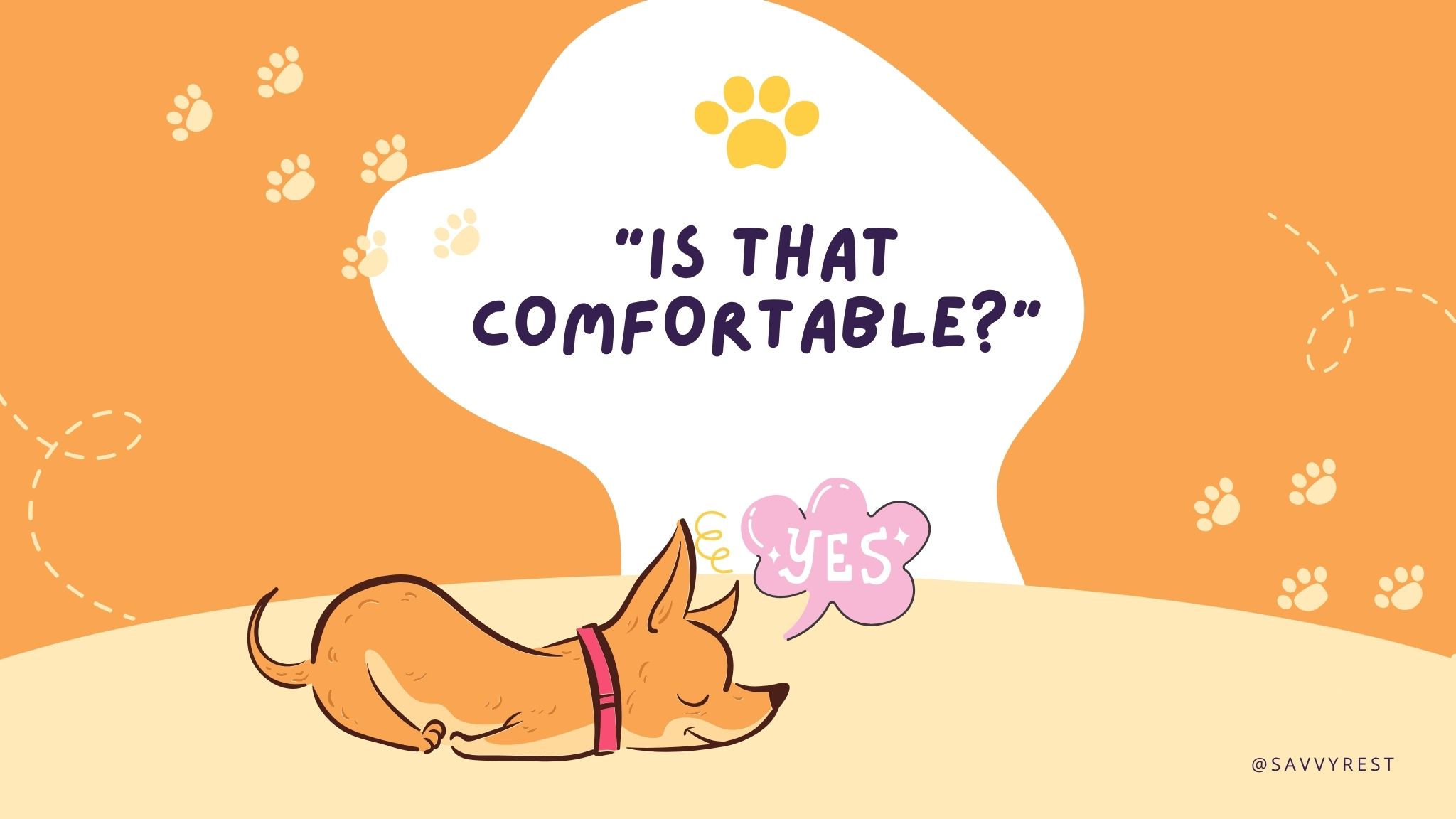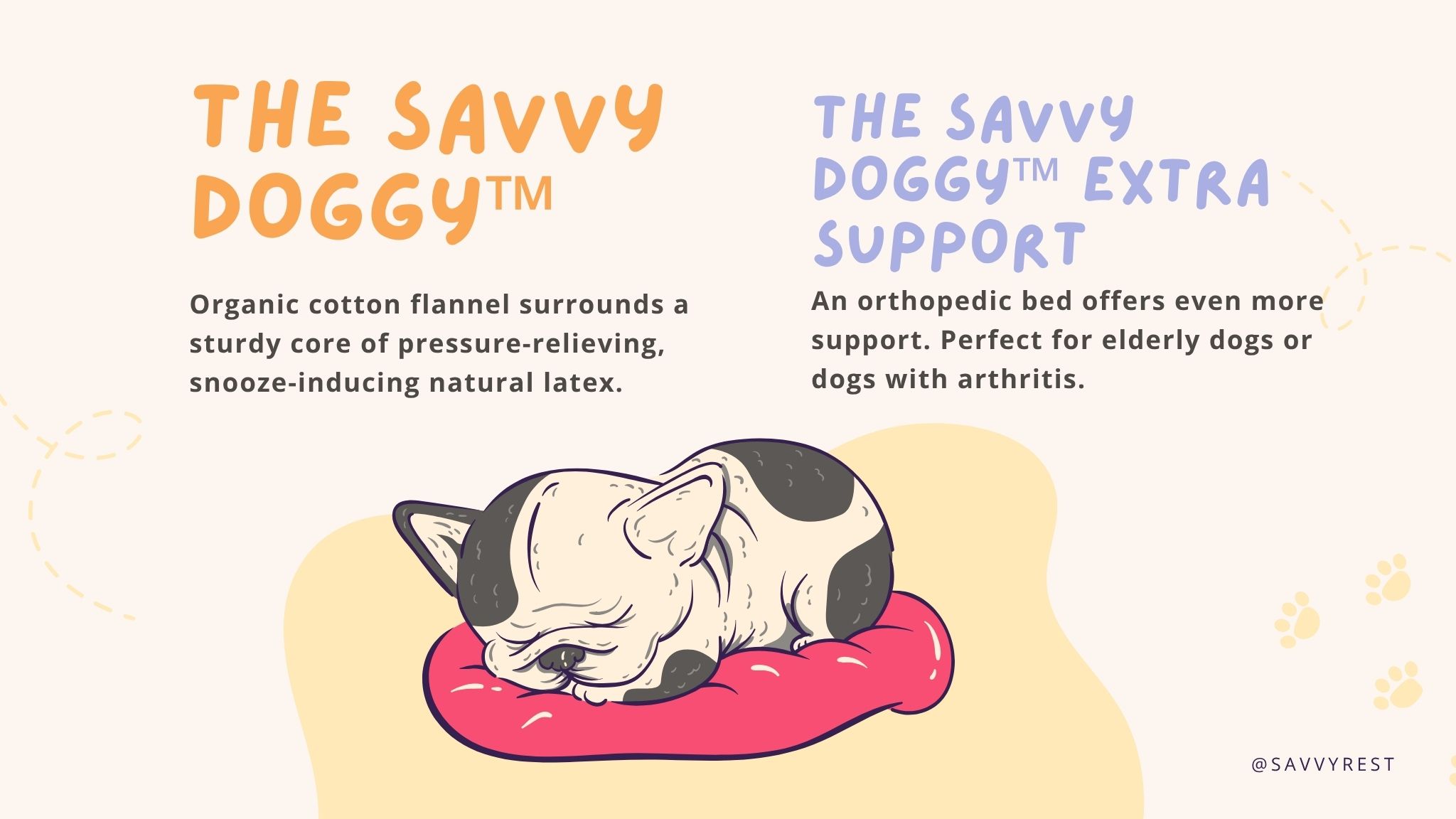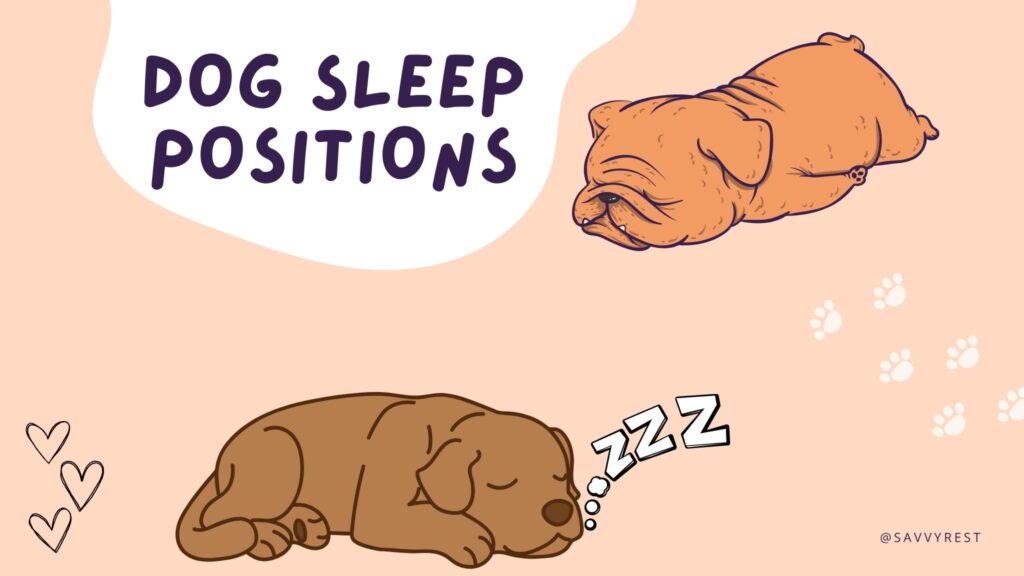Have you ever wondered why your dog sleeps the way they do? Do you look over at your passed out pup and think, that doesn’t look comfortable or why are they in that awkward position?
This article dives into popular dog sleep positions and behaviors, such as twitching, fast breathing, and back sleeping.
You may be surprised by what you find out.
What Does My Dog’s Sleep Position Mean?
If you have a dog, you know that they can sleep in some odd positions on the couch while you watch TV. You may think it’s just their own little unique quirk but what if there is actually some meaning behind it?
Below are some of the most popular dog sleep positions.

Side Sleeper (on side with belly exposed)
- They feel safe, especially when their belly is exposed since this is considered a vulnerable position.
- They are happy and comfortable.
- They are relaxed and not on edge.
- They trust you.
The Sphinx (belly down, facing forward with head resting on front paws)
- Loyal
- Playful
- Relaxed but ready to protect you if needed.
Snoozing Superhero (belly down, front and back legs stretched out)
- Energetic and ready to play
- Youthful and goofy
- This position is a breath of fresh air…literally. It helps open the airway which makes it popular for breeds with respiratory issues, such as bulldogs and pugs.
Show Me Your Belly (belly up, legs in the air)
- They trust you.
- They are very comfortable (both physically & mentally).
- They feel safe.
- They may be hot (this position helps them cool down).
Curled Up (curled into a donut shape)
- They may be cold (this position keeps the warmth in).
- They may be anxious (trying to protect themselves).
- They are looking to de-stress.
- They are sweet but reserved.
- An introverted dog may gravitate toward this position.
Cuddling Canine (cuddled up with you or on top of you and/or another pet)
- Affectionate
- They wish to bond and have a strong pack mentality.
- Not into personal space

What should my dog sleep on?
While you absolutely can have your dog sleep in the bed with you, we also have another option if you prefer your space. An organic dog bed is an excellent choice because it is made of natural materials that are not treated with harsh chemicals. It is also supportive and specifically designed for a dog’s comfort.
If your dog is elderly or has joint pain, we recommend this orthopedic dog bed.
Why does my dog sleep so much?
Dogs sleep significantly more than their human counterparts.
Between frequent naps and then overnight sleeping, adult dogs typically sleep around 11 hours a day on average!
Puppies sleep even longer and can sleep up to 20 hours!
Senior dogs are in the middle, sleeping more than a younger adult dog but not as much as puppies.
Why does my dog twitch in his sleep?
Your dog twitching in sleep is normal and typically part of their REM cycle. Dogs dream just like us, and their muscles are essentially “frozen” during REM meaning that the movements they are dreaming about aren’t actually physically acted out. So if they are dreaming of digging a hole at the beach, they aren’t actually going to start digging a hole in your carpet.
You may notice your dog twitches more as they get older due to aging. The part of the brain that is responsible for stopping muscles from acting out during sleep can weaken over time.
Why does my dog breathe fast while sleeping?
If you notice your dog breathing fast while sleeping, they are probably just dreaming. However, if you notice wheezing or coughing, that could be an indication of a medical issue and it is best to have your dog examined by your veterinarian.
Why does my dog bark in his sleep?
These barks (usually softer than a full bark) are probably another indication that your dog is dreaming.
Why does my dog wag his tail in his sleep?
A dog wagging their tail in his/her sleep is most likely another indication of dreaming (and probably a happy dream)!
Why does my dog sleep with his tongue out?
A lot of times it is due to posture since some positions lead to the tongue sticking out or even being fully out (think a dog on his back with his head tilted). It could also be linked to dreaming. Fun fact: The tongue is also a tool to help get cooled down since dogs cannot sweat. So when you see a dog panting, that is their natural way of trying to regulate their temperature.
If you suspect there may be a health issue involved, such as excessive panting, wheezing, or signs of sleep apnea, we recommend seeing your veterinarian.
Now You Know More About Your Dog
Dogs bring so much joy to our lives, even when they are sleeping. Have fun cuddling up with your furry companion.
